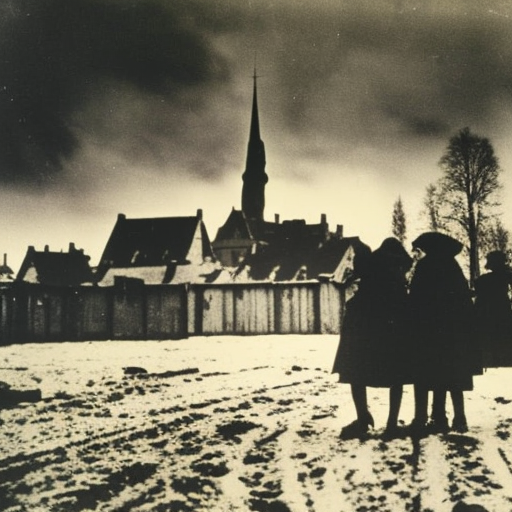Dutch Famine of 1944-1945: A Period of Starvation and Suffering
The Dutch famine of 1944-1945, also known as the Hongerwinter (Hunger Winter), was a severe period of starvation and suffering that occurred in the German-occupied Netherlands during the final months of World War II. This famine was the result of a combination of factors, including a German blockade, a harsh winter, and the destruction of agricultural infrastructure.
The German Blockade and Food Shortages
In September 1944, as Allied forces advanced towards the Netherlands, the German occupiers implemented a blockade to prevent food and supplies from reaching the Dutch population. This blockade was a retaliatory measure against the Dutch resistance and was intended to punish the civilian population for their support of the Allies.
As a result of the blockade, food shortages quickly became a reality for the Dutch people. The limited supplies that were available were distributed through a rationing system, but the meager rations were far from sufficient to sustain the population. The lack of essential nutrients and calories led to widespread malnutrition and weakened immune systems.
The Harsh Winter and Destruction of Agricultural Infrastructure
The winter of 1944-1945 was exceptionally harsh, with temperatures dropping to extreme lows. This severe weather made it even more difficult for the Dutch population to find food and stay warm. Additionally, the German occupiers destroyed agricultural infrastructure, including farms, livestock, and transportation networks, further exacerbating the food crisis.
The combination of the German blockade, harsh winter conditions, and destruction of agricultural infrastructure created a perfect storm of starvation and suffering for the Dutch people.
Impact on the Dutch Population
The Dutch famine had a devastating impact on the population, particularly in urban areas. People resorted to desperate measures to find food, such as eating tulip bulbs, sugar beets, and even grass. The lack of proper nutrition led to a sharp increase in mortality rates, especially among infants and the elderly.
The famine also had long-term health consequences for those who survived. Many individuals who experienced malnutrition during this period developed health issues later in life, including obesity, diabetes, and cardiovascular problems. This phenomenon, known as the “Dutch Hunger Winter Cohort,” has been the subject of extensive research into the effects of early-life malnutrition on long-term health.
Relief Efforts and the End of the Famine
Relief efforts from various sources, including the Red Cross and the Allies, began to alleviate the suffering in early 1945. Food drops and shipments of supplies were organized to provide aid to the starving population. However, due to the ongoing war and logistical challenges, relief efforts were limited in their effectiveness.
The famine finally came to an end in May 1945, with the liberation of the Netherlands by Allied forces. The lifting of the German blockade allowed food and supplies to flow freely into the country once again, bringing relief to the starving population.
Legacy and Remembrance
The Dutch famine of 1944-1945 remains a significant event in Dutch history, symbolizing the suffering and resilience of the Dutch people during World War II. It serves as a reminder of the devastating consequences of war and the importance of humanitarian aid in times of crisis.
Today, the famine is commemorated annually in the Netherlands on May 4th, during the national Remembrance of the Dead, as a way to honor the victims and reflect on the hardships endured during this dark period in Dutch history.












